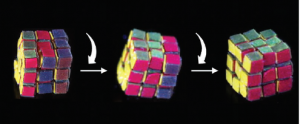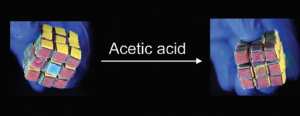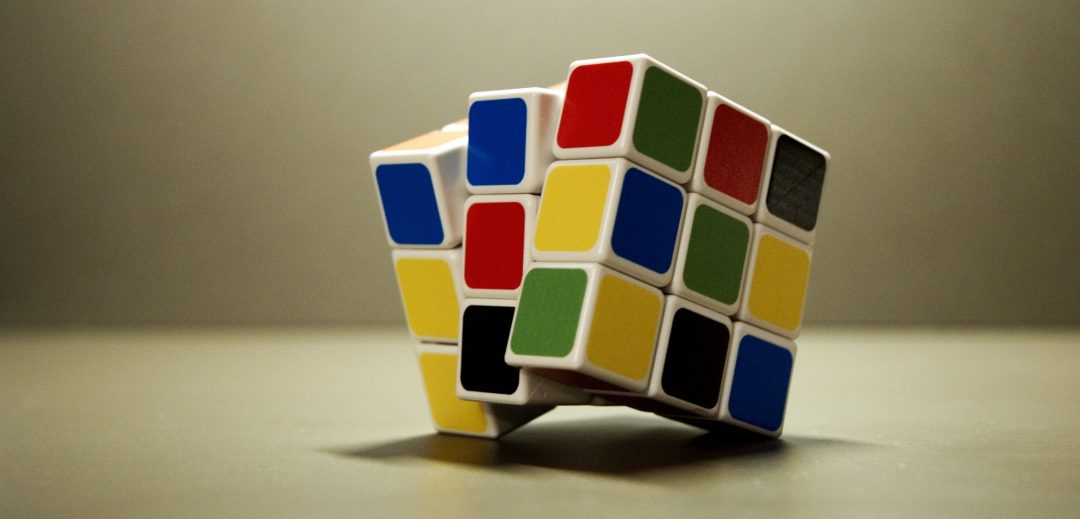Since its invention in 1974, the Rubik’s Cube® has won many awards, been crowned highest selling puzzle game of all time, and has served as inspiration for the sport of speedcubing. To that list of accolades, “testing ground for soft robotics” can now be added.
The development of some soft robots will require material whose adhesion properties can be easily manipulated. An international team recently used the design of a Rubik’s Cube as a showcase for a hydrogel with fascinating properties.
The hydrogel contains two chemical groups that enable increasingly strong adhesion with time. When two pieces of this hydrogel were placed in contact over 24 hours, a very strong bond was formed. Over shorter time-frames the bonds between hydrogels were much weaker.

Hydrogel Rubik’s Cube design.
A Rubik’s Cube is made of 27 smaller cubes. Each of these small cubes was made by adhering nine colored slices of hydrogel to a cube of hydrogel over a long period. These 27 cubes were then arranged into the structure shown above.
Due to the lower level of adhesion between individual cubes than within the cubes, faces of the novel hydrogel cube could be rotated freely around the axis of the larger cube (see below).

Rotation of one face.
In an additional experiment that perhaps runs contrary to the spirit of the game, the team showed the color of individual hydrogel slices could be changed through chemical treatment. As shown below, this technique could be used to solve a face when more traditional approaches failed.

This seems like cheating.
It is perhaps unlikely that this design will have an impact in the field of speedcubing, where the world record for solving a Rubik’s Cube was cut dramatically last year to 3.75 seconds. However, the fascinating properties shown by this hydrogel make it an interesting candidate for the design of soft robotics.
The name and representations of the Rubik’s Cube® used by permission of Rubik’s Brand Ltd.

















